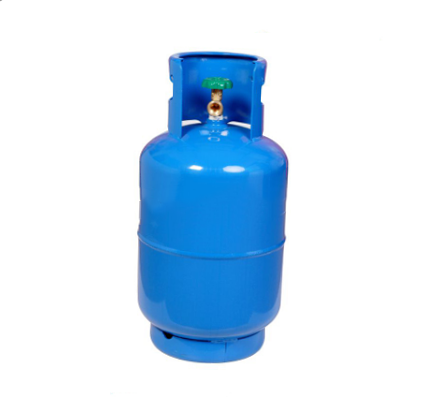
Lpg gas cylinder, we are a gas cylinder china manufacturer, provide 2kg,5kg-50kg product, LPG bottle is usually used to store ordinary LPG gas, propane or butane steel container, reliable performance.
What is inside LPG gas cylinder?
LPG (liquefied petroleum gas), commonly known as “gas cylinder”, is used for cooking, heating and lightning. LPG is a colorless and odorless gas. However, special odors were purposely added so that potential leaks could be easily detected. LPG is made by refining crude oil at refineries or from natural gas and then transported to consumers in steel tanks. LPG, which is heavier than air due to its high density, is a hydrocarbon – based flammable gas. LPG is the generic name for the different proportions of butane and propane gases and their mixtures. In Turkey, the LPG used in domestic gas cylinders consists of 70% butane and 30% propane.
Liquefied crude oil gas or liquid crude oil gas (LPG or disc gas), conjointly brought up as merely gas or fuel, square measure ignitable mixtures of organic compound gases used as fuel in heating correct location of use appliances, change of state instrumentation, and vehicles.
LPG is the abbreviation or brief form for liquefied petroleum fuel. like any fossil fuels, it’s miles a non-renewable source of energy. it’s miles extracted from crude oil and herbal gas. the principle composition of sale of domestic LPG cylinders are hydrocarbons containing three or four carbon atoms. The ordinary components of LPG consequently, are propane (C3H8) and butane (C4H10). Small concentrations of different hydrocarbons will also be gift. depending on the supply of the LPG and how it has been produced, additives other than hydrocarbons can also be gift.
LPG is a fuel at atmospheric strain and regular ambient temperatures,gas bottles suppliers but it can be liquefied while slight pressure is implemented or whilst the temperature is sufficiently decreased. it could be without Coal problems condensed, packaged, stored and applied, which makes it a great strength source for a huge range of packages.
generally, the gasoline is stored in liquid shape underneath pressure in a metal field, cylinder or tank. The strain inside the field will depend upon the type of LPG (industrial butane or business propane) and the outdoor temperature.
LPG cylinders include a main valve for controlling gas release. Pressure relief valve (PRV) is a safety device installed in the main valve of LPG cylinder. If the gas pressure in LPG cylinder increases due to fire or other heat sources, the pressure relief valve releases some gas to release pressure.
LPG cylinders can also be called “LPG gas cylinders”, “LPG tanks”, “propane cylinders”, “LPG gas cylinders” or just “cylinders”.
LPG cylinder (propane tank) can also be called “propane cylinder”, “LPG gas cylinder”, “LPG cylinder” or “cylinder”.
LPG cylinders (propane tanks) contain liquids and gases, liquefied petroleum gas (LPG) – Liquefied petroleum gas (LPG) – liquefied under relatively low pressure.
When used with CNG, LPG bottles are considered as low pressure cylinders and high pressure cylinders.
Propane cylinder size adopts domestic LPG gas cylinder size, including 45 kg propane cylinder, cylinder size: 1250 mm high, 375 mm diameter, capacity 88 liters. They also include 90 kg propane cylinders and 210 kg propane cylinder-cylinder size.
What is the price of LPG empty cylinder manufacturer?
In Bangalore, the non-subsidised LPG price in August 2021 was Rs. 862.50 for 14.2 kg cylinders, see Rs.
How much does 5kg stove LPG cylinder cost?
As of now, the government subsidizes 14.2 kg of 12 cylinders per household per year. Customers must purchase any additional LPG cylinders at market price. The amount of subsidy provided by the Government for the 12 annual replenishments varies from month to month.
How much LPG gas is in a cylinder price?
As of now, the authorities subsidises 12 cylinders of 14.2 kilograms each per family each year. customers ought to make any additional purchases of LPG cylinders at the market fee. the amount of the subsidy provided through the government on the annual quota of 12 refills varies from month to month.
How much pressure is in a LPG cylinder?
The pressure at which LPG becomes liquid (called vapor pressure) also varies with composition and temperature; For example, pure butane at 20°C (68°F) is about 220 kpa (32 psi), while pure propane at 55°C (131°F) is about 2,200 pascals (320 psi).
Is LPG the same as propane?
Australian LPG consists of propane. So it’s correct to call household gas cylinders propane – they’re the same thing. In the United States, the name LPG is not commonly used. Americans call it propane.
How does LPG cylinder work?
When boiling, LPG draws heat from the steel walls of LPG cylinders (propane tanks), which in turn draws heat from the surrounding air. When you release some of the pressure in the cylinder (propane tank) by turning on the gas device, the LPG liquid boils and returns to gaseous vapor.
What is LPG?
Liquefied petroleum gas or liquefied petroleum gas (LPG or LP gas), also known as propane or butane, is a flammable mixture of hydrocarbons used as gas fuel in heating appliances, cooking equipment, and vehicles.
It is increasingly used as aerosol propellant and refrigerant to replace chlorofluorocarbons in an effort to reduce ozone layer damage. When specifically used as fuel for vehicles, it is often referred to as liquefied petroleum gas.
Various liquefied petroleum gases purchased and sold include mixtures of mainly propane, most commonly propane and butane. In the northern hemisphere in winter, the mixtures contain more propane, while in summer they contain more butane in the United States, mainly selling two grades of liquefied petroleum gas: commercial propane and HD-5. These specifications are published by the Gas Processor Association (GPA) and the American Society for Materials and Tests (ASTM). Propane/butane mixtures are also listed in these specifications.
Propylene, butene and various other hydrocarbons are also commonly present in small concentrations. HD-5 will limit the propylene content that can be placed in LPG to 5% and be used as an automatic gas specification. A powerful odorant, ethanethiol, was added to make leaks easy to detect. The internationally recognized European standard is EN 589. In the United States, Tetrahydrothiophene (thiophene) or pentyl mercaptan are also approved flavor additives, although they are not currently used.
LPG is prepared by refining oil or “wet” natural gas, almost entirely from fossil fuel sources, and is manufactured during oil (crude oil) refining or extracted when it is discharged from the ground from oil or natural gas flows. It was first produced by Dr. Walter Snelling in 1910, and the first commercial products appeared in 1912. It currently provides about 3% of energy consumption, relatively clean combustion, smokeless ash, and very little sulfur emissions. Because it is a kind of gas, it will not cause harm of ground or water pollution, but it will cause air pollution. LPG has a typical specific calorific value of 46.1 MJ/kg, while fuel oil is 42.5 MJ/kg and gasoline (gasoline) is 43.5 MJ/kg.
However, the energy density of 26 MJ/L per unit volume is lower than that of gasoline or fuel oil because its relative density is lower (about 0.5-0.58 kg/L, compared with 0.71-0.77 kg/L for gasoline).
Because its boiling point is lower than room temperature, LPG will be supplied to the steel container under normal and rapid evaporation temperature and pressure, usually under pressure. They are usually filled to 80-85% of their capacity to allow the thermal expansion of the liquid contained.
The volume ratio of vaporized gas to liquefied gas varies according to composition, pressure and temperature, but is usually about 250:1. The pressure at which LPG becomes liquid, called vapor pressure, also varies according to composition and temperature. For example, pure butane is about 220 kPa (32 pounds/square inch) at a temperature of 20 degrees C (68 degrees F) and pure propane is about 2,200 kPa (320 psi) at 55 degrees C (131 degrees F). Unlike natural gas, liquefied petroleum gas (LPG) is heavier than air, so it flows along the floor and tends to settle in low locations, such as basements.
There are two main dangers. If the mixture of LPG and air is within the explosion limit and has some source of fire, the first may be explosion. The second is the asphyxia caused by LPG replacement of air, which leads to the decrease of oxygen concentration.
“Complete” LPG cylinders contain 85% liquid, and the free margin will contain vapor whose pressure varies with temperature.
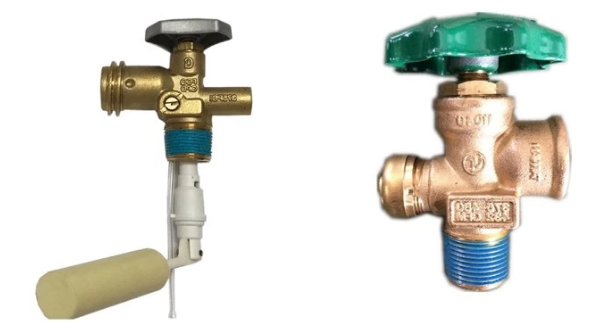 | 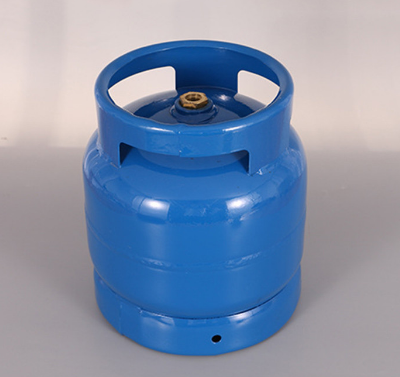 |
Is LPG environmentally friendly?
As well as being environmentally friendly, LPG is extraordinarily flexible, it can be used for plenty purposes which includes domestic heating, cooking, tenting and driving. LPG is sort of half of the fee of petrol and diesel on the pumps so it has monetary benefits in addition to helping to lessen street delivery pollution.
How many Litres of LPG are in a 45 kg cylinder?
LPG cylinders are crammed to 80% capacity LPG tanks are crammed to 85% potential if over 5,000 litre and 80% ability if much less than 5,000 litre. A on hand conversion rate to take into account with filled cylinders is that 1 kilogram is about equal to at least one.96 litre of LPG.
How many Litres of LPG are in a 15kg cylinder?
lpg gas bottle size, Capacity is based on 1.98litres per kg of LPG.
| Type | Steel | price |
| Diameter | 350 mm | |
| Height | 730 mm | |
| Capacity | 40L | $50 |
| Tare Wt | 18.0 kg | |
| Full Wt | 36.0 kg | |
| Energy | 417MJ |
LPG, Liquefied Petroleum Gas -Propane
LPG – Liquefied Petroleum gas – describes flammable hydrocarbon gases which includes propane, butane and combos of those colourless, low carbon gaseous fuels.
LPG, liquefied through pressurisation, comes from herbal gasoline processing and oil refining. Processed LPG is used as gasoline for heating, cooking, hot water, and autogas fuel.
In extraordinary international locations, the LPG heating fuel gases supplied can be propane, butane or propane-butane blends.
LPG is just propane. Propane is LPG but now not all LPG is propane.
Propane cylinder
LPG cylinders (propane tanks) are usually steel containers used to store ordinary LPG gases, propane or butane. Household and small businesses usually use liquefied petroleum gas cylinders of 45 kg, 90 kg or 210 kg. Barbecue cylinders are 9kg and 4kg in size.
Liquefied petroleum gas (LPG), as a liquid, is under pressure and converts to gas when some pressure is released. The gas is at the top of the LPG bottle and the liquid LPG is at the bottom.
LPG cylinder (propane tank) can also be called “propane cylinder”, “LPG cylinder”, “LPG cylinder” or “cylinder”.
LPG cylinders (propane tanks) contain liquids and gases, liquefied petroleum gas (LPG) – Liquefied petroleum gas (LPG) – liquefied under relatively low pressure.
When used with CNG, LPG bottles are considered as low pressure cylinders and high pressure cylinders.
The size of LPG bottle varies with application and requirement.
How an LPG Cylinder Works?
LPG is saved underneath pressure, as a liquid, in an LPG bottle.
lpg gas bottle suppliers gases can all be compressed into liquid at notably low pressures.
LPG liquid boils and turns back into gas vapour while you release a number of the pressure in the gas bottle viaturning for your gasoline equipment.
LPG is generally stored, as a liquid, in metallic vessels starting from small BBQ gas bottles to larger fuel cylinders and storage tanks.
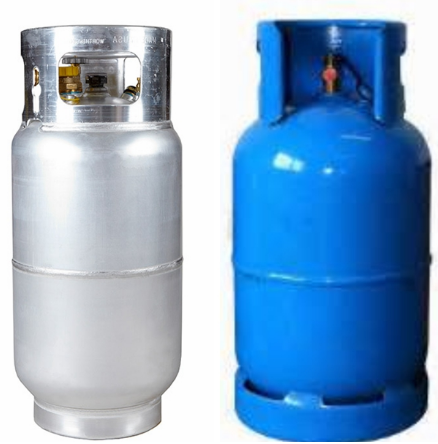
What LPG Bottle?
LPG bottles are generally metal vessels for storing the common LPG gases, propane or butane. houses and small agencies typically use 45kg, 90kg or 210kg LPG bottle sizes. BBQ fuel bottles are available 9kg and 4kg fuel bottle sizes.
LPG is underneath stress, as a liquid, and turns back into gas when you release a few stress. The gasoline is in the top of the LPG bottle & the liquid LPG at the lowest.
LPG (propane) bottles may also be referred to as “Propane gas Bottles”, “LPG Bottle”, “LPG fuel Cylinders” or simply “gasoline Bottle”.
LPG cylinders contain liquid and gas, as LPG – Liquefied Petroleum gasoline – liquefies underneath distinctly low strain.
An LPG bottle is considered low strain as opposed to excessive pressure cylinders, as used with CNG.
LPG bottle sizes vary, based on software and demand.
A small LPG bottle is portable, as utilized in tenting.
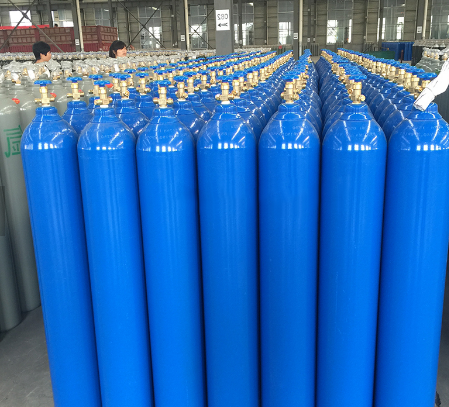
LPG Come From
LPG comes from drilling oil and fuel wells.
it’s far a fossil gasoline that does not arise in isolation.
LPG is found naturally in mixture with different hydrocarbon fuels, commonly crude oil and herbal gas.
LPG is produced in the course of natural gas processing and oil refining.
it’s far isolated, liquefied via pressurisation and stored in strain vessels.lpg cylinder suppliers
LPG Made Production Process
LPG is made during natural gasoline processing and oil refining.
LPG is separated from unprocessed herbal gasoline the usage of refrigeration.
LPG is extracted from heated crude oil the use of a distillation tower.
This LPG may be used as is or separated into its three number one parts: propane, butane and isobutane.
it is stored pressurised, as a liquid, in cylinders or tanks.
How to vaporize LPG liquid?
Did you already know that whenever you switch on considered one of your fuel home equipment, the LPG to your gasoline bottles begins to boil?
If you could see though the metallic, you will additionally note that it appears much like water boiling.
The huge distinction is that it happens at -42°C or -44°F.
this is vaporisation, that’s how LPG – propane – is going from liquid to vapour (gas).
The LPG gas vapour is held within the pinnacle of the LPG bottle and the liquid LPG at the bottom.
What is the boiling point of LPG?
Water boils at one hundred°C or 212°F, turning into a fuel (steam).
In contrast, LPG boils at -42°C or -44°F, turning into fuel vapour.
LPG stays liquid because it’s far beneath stress in a 50kg lpg cylinder price.
As a liquid, it seems plenty like water.
it is colourless and odourless in its natural state.
What is LPG gas bottle?
LPG fuel, liquefied thru pressurisation and stored in gas bottles, cylinders and tanks. It comes from herbal fuel processing and oil refining. LPG gas is used as heating, cooking and auto gas. In exceptional international locations, what is furnished as LPG gasoline may be propane, butane or propane-butane blends.
Is BBQ gas the same as LPG?
Propane is LPG however no longer all LPG is propane. LPG – Liquefied Petroleum gasoline – is flammable hydrocarbon fuel liquefied via pressurisation. Propane is classified as LPG, along side butane, isobutane and combinations of these gases. LPG comes from natural fuel processing and oil refining.
Compare lpg gas bottle prices
natural gas is generally inexpensive according to megajoule (MJ) than LPG, however natural fuel customers should pay a further ‘supply charge’ – a price of about 60 to ninety cents for each day you’re related to the mains gas network. This rate applies regardless of whether or not you actually use any fuel or not.
LPG clients may need to pay a ‘gas provider fee’, that is nearly a condo price for the gas cylinders, of about $35 to $45 a year, however this works out a lot much less than you’ll pay in natural gas deliver prices over three hundred and sixty five days.
for that reason, natural gas is suggested for clients with high gasoline usage, such that their usage fee savings negate the extra supply fees. families with mild or low fuel usage could in all likelihood be better off with LPG, even though a mains fuel connection is available. This all, of direction, depends on a selection of variables, such as the fee of LPG at the time and what natural gas deals are available in your place.
Cylinders exist as liquids and gases. When you start using a device connected to a bottle of gas, the gas LPG at the top consumes up to ple.
LPG is produced by refining petroleum or wet natural gas, mainly from fossil fuels.
The price of liquefied petroleum gas (LPG) has risen again.
The variety of LPG bought and sold includes propane (including propane and butane). In the northern hemisphere, the mixture contains more propane in the winter, while in the summer, in the United States, two major grades of LPG are sold: commercial propane and HD-5.
In Britain and the rest of Europe, when discussing any use (industrial, medical or liquefied petroleum), it is often referred to as “bottled gas”. In contrast, in the US, so-called LIQUEFIED petroleum gas is often referred to as “LPG” in the UK and can be ordered under one of several trade names or butane or propane, depending on the heat output required. .
You may like:
